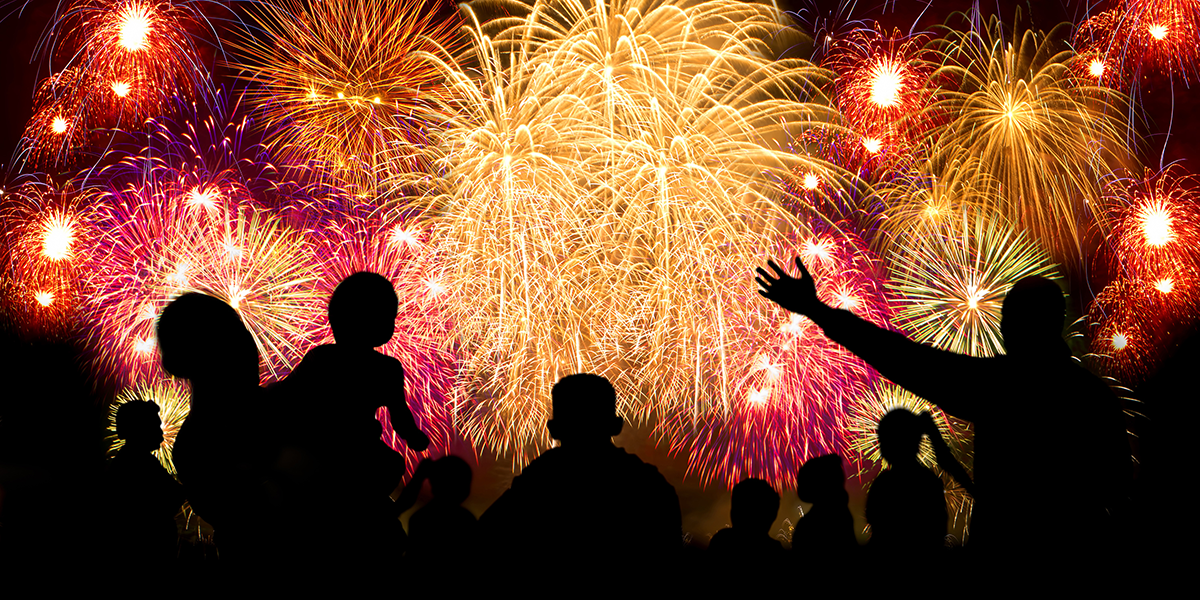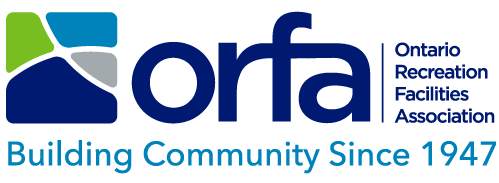- ORFA Home
- Pyrotechnics (Fireworks) Safety
ORFA RESOURCES I GUIDELINE
Pyrotechnics (Fireworks) Safety
Version 1.0 Issue Date: May 2022 I Print This Resource

Introduction
Fireworks were first invented in ancient China in the 12th century to scare away evil spirits. Today, those considering hosting a fireworks display must be aware that there are persons who are afraid of the noise produced by these displays and others who are concerned with the environmental impact of such events.
Types of Fireworks
Fireworks are defined as being hot or cold. Hot fireworks are the traditional displays held outdoors during significant events such as Canada Day. Cold fireworks are most often used indoors. The marketplace also has air-launch technology, which utilizes compressed air to launch the fireworks instead of gunpowder, while low-smoke pyrotechnics produce practically none of the smoke or ash that traditional black powder fireworks do.
Fireworks Hazards
Between April 1, 2011, and May 24, 2019, there were 122 reported cases of unintentional injuries related to fireworks and other similar products, in Ontario. It is important to accept that persons igniting fireworks that may cause damage or harm will be liable for these events. Obtaining adequate insurance should be carefully considered while adding a “no fireworks” clause to grounds rental contracts is also strongly recommended. Remember, fireworks can be dangerous, causing serious burn, hearing, and eye injuries.
Fireworks Legislation
Fireworks are most often restricted by law. Within a corporation’s boundaries a by-law most likely controls the sale and use of any such displays, while ignition on crown lands may be strictly controlled by the Ministry of Natural Resources.
The Explosives Act requires anyone working with, using, transporting display fireworks or special effect pyrotechnics to hold a current Fireworks Operator Certificate (FOC) from Natural Resources Canada. To receive an FOC the candidate must be 18-years of age and successfully complete a safety and legal awareness course for display fireworks or special effect pyrotechnics. In Canada, fireworks are separated into three different classes:
Consumer Fireworks are low-hazard firework articles designed for recreational use by the public. These articles include items such as roman candles, sparklers, fountains, wheels, volcanoes, mines, and snakes.
Display Fireworks are high-hazard firework articles designed for use by professionals. These articles include items such as aerial shells, cakes, roman candles, waterfalls, lances, and wheels.
Pyrotechnic Special Effects are high-hazard pyrotechnics articles designed for use by professionals. These articles include items such as gerbs, mines, comets and crossettes. This class also includes special purpose pyrotechnics.
It is important to note that there is a difference between display fireworks and special effect pyrotechnics certifications.
Potential Environmental Impacts
Not all fireworks are the same. Where and how the fireworks are produced will define what heavy metals and pollutants may be produced from their ignition. Off-shore fireworks are most often the most toxic. Knowing where the fireworks are being manufactured and what toxins may be produced is an important part of the planning process.
- Air Pollution - Smoke from low level fireworks consists mainly of fine toxic dusts (particulate matter) that can easily enter the lungs. This smoke may contain a mixture of sulfur-coal compounds, traces of heavy metals, and other toxic chemicals or gases. The combustion cloud can contain harmful fumes such as ozone, sulfur dioxide and nitric oxide. This represents a real threat for people with asthma or multiple chemical sensitivity (MCS).
- Water Pollution - Fireworks fallout can contaminate water supplies and residue on the ground can be carried away by rain and end up in lakes and rivers.
- Noise Pollution - Noise at 85 decibels or above can damage hearing. Fireworks can exceed 140 decibels. Fireworks often disturb people trying to sleep. There are individuals who suffer from pyro-technophobia – a fear of fireworks. Fireworks can also be a problem for animals, both domestic and wild.
Safely Planning a Display
Planning, setting up and firing fireworks affect public safety. Anyone who handles display fireworks must be at least a Display Assistant. Certification is divided into the following classes:
Display Assistant- can assist and work under the direct supervision of a certified Display Supervisor. Completion of the Display Fireworks Safety and Legal Awareness Course is mandatory prior to certification.
Display Supervisor - can act as Lead Supervisor in Charge of displays that use Display Fireworks. Shells used must not be over 155 mm (6") and the display must be fired from solid ground or ice. They are also responsible for training and supervising of Display Assistants.
Display Supervisor with Endorsements - can act as Lead Supervisor in Charge of displays that use the types of effects or fire from various firing locations as specified in the endorsement. They are also responsible for training and supervising of Display Assistants and Display Supervisors.
Safely Transporting Fireworks
The Explosives Regulatory Division (ERD) controls the type and quantity of explosives that are imported into Canada and transported in transit through Canada. During the authorization process the explosive substances or article may be assigned a type, hazard category and a UN Number. This classification identifies the hazards posed by the explosive substance or article as packaged for transport. Pending the amount being transported, fireworks may fall under the Transport of Dangerous Goods Regulations.
Safely Storing Fireworks
Canadian federal law permits the storage of 10kg or less of fireworks in a dwelling or a place attached to a dwelling (e.g., a garage) so long as:
- the fireworks are kept in a dry place away from any source of heat and any substance that could cause ignition; and
- the fireworks are kept inaccessible to everyone under 18 years of age.
A person with a fireworks operator certificate (display supervisor) in charge of the fireworks display may store up to 125 kilograms of fireworks and 500 electric matches in a storage unit if approval has been obtained from the local authority to do so.
Emergency Planning
Changing weather patterns are creating extremely dry conditions that can raise the risk of fire caused by these types of ignitions. Monitoring weather conditions to the moment of ignition being prepared to cancel a display is an important part of the planning process. Creating an emergency response is an important part of the planning process. Consulting with local fire officials is strongly recommended.
Fireworks can add to any community significant event. However, using these explosive devices safely and correctly requires careful planning.
Other Resources
COPYRIGHT © 2022 ONTARIO RECREATION FACILITIES ASSOCIATION INC. DISCLAIMER: While the Ontario Recreation Facilities Association Inc. (ORFA) does its best to provide useful general information and guidance on matters of interest to its members, statutes, regulations and the common law continually change and evolve, vary from jurisdiction to jurisdiction, and are subject to differing interpretations and opinions. The information provided by the ORFA is not intended to replace legal or other professional advice or services. The information provided by the ORFA herein is provided “as is” and without any warranty, either express or implied, as to its fitness, quality, accuracy, applicability or timeliness. Before taking any action, consult an appropriate professional and satisfy yourself about the fitness, accuracy, applicability or timeliness of any information or opinions contained herein. The ORFA assumes no liability whatsoever for any errors or omissions associated with the information provided herein and furthermore assumes no liability for any decision or action taken in reliance on the information contained in these materials or for any damages, losses, costs or expenses in any way connected to it. ORFA documents are made available as a benefit of membership and are always open for suggested edits, corrections and improvements. Further, all ORFA resources are restricted for use by members in good standing for awareness and education purposes only. We ask that ORFA resources not be uploaded to the internet. |
